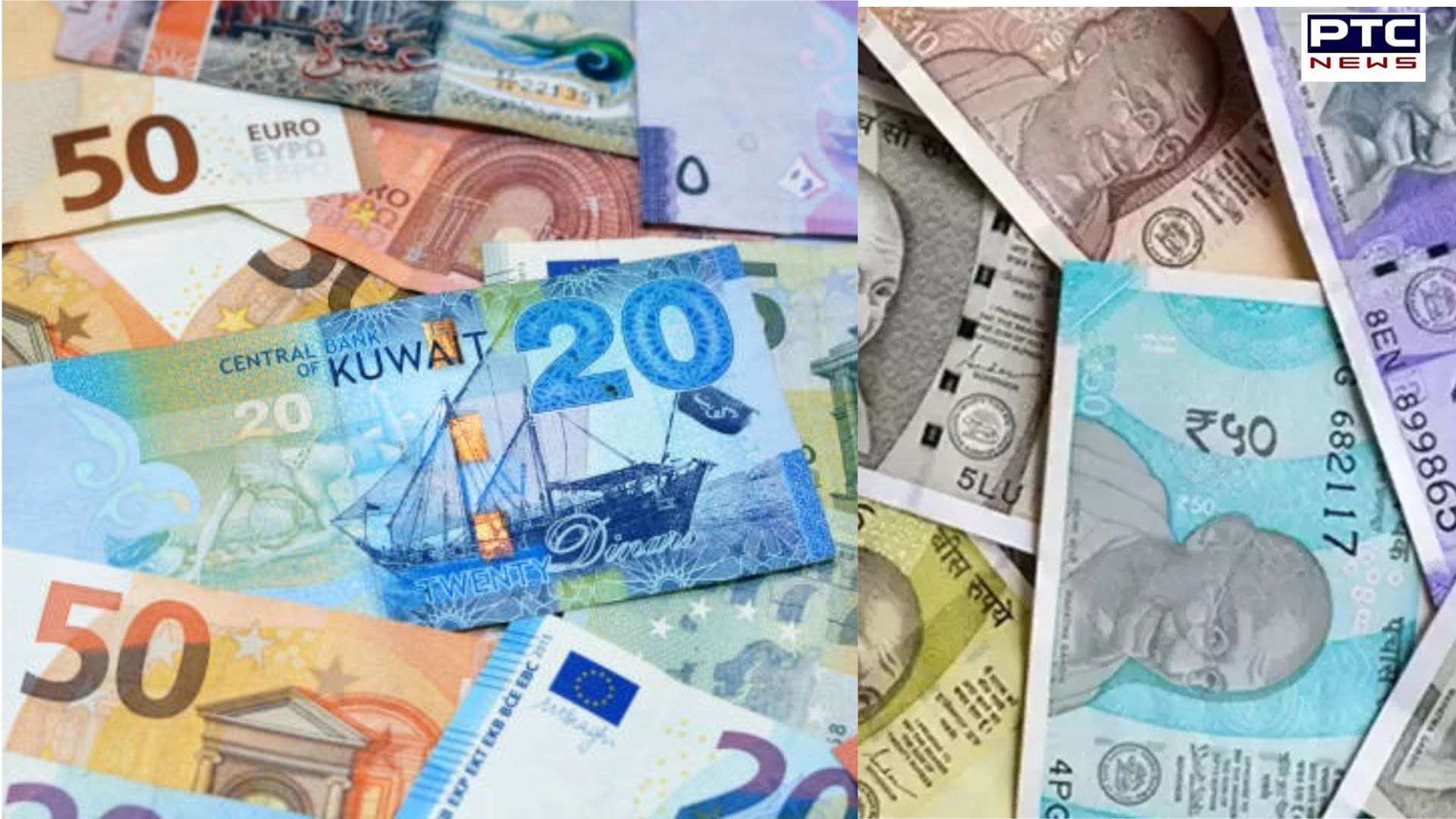
PTC Web Desk: Currency is often regarded as the lifeblood of global trade, providing a gauge of a nation's economic vitality. A robust currency not only signifies stability, but also attracts investments and promotes international collaborations. The United Nations recognises 180 currencies as legal tender, but factors such as interest rates, inflation, and geopolitical stability influence their values rather than just popularity and widespread usage.
Forbes recently unveiled a list of the world's 10 strongest currencies, comparing them with the Indian Rupee and the USD. The top spot is claimed by the Kuwaiti Dinar, valued at Rs 270.23 and $3.25. The Bahraini Dinar closely follows, with a value of Rs 220.4 and $2.65. The Omani Rial secures the third position (Rs 215.84 and $2.60), followed by the Jordanian Dinar (Rs 117.10 and $1.141), Gibraltar Pound (Rs 105.52 and $1.27), British Pound (Rs 105.54 and $1.27), Cayman Island Dollar (Rs 99.76 and $1.20), Swiss Franc (Rs 97.54 and $1.17), and the Euro (Rs 90.80 and $1.09).
Also Read | From Maldives to Lakshadweep: Cancel your trip, get free chole bhature
Also Read | FASTag KYC: Check out step-by-step guide
Also Read | PM Modi in Kerala; attends wedding of Suresh Gopi's daughter
Intriguingly, the widely traded US Dollar finds itself at the bottom of the list, valued at Rs 83.10. Forbes notes that despite its global popularity and primary reserve currency status, the US Dollar ranks 10th among the world's strongest currencies.
/ptc-news/media/media_files/5kX8OD4gwerG07yvoNTa.jpg)
According to the latest exchange rates from the International Monetary Fund (IMF) website, India stands at 15th place, with its value listed at Rs 82.9 per US Dollar.
The Kuwaiti Dinar, consistently maintaining its top position since its introduction in 1960, attributes its success to Kuwait's economic stability, driven by abundant oil reserves and a tax-free system. Forbes also recognises the Swiss Franc, the currency of Switzerland and Liechtenstein, as widely regarded as the world's most stable currency.
It is essential to note that the list is based on currency values as of January 10, 2024, and Forbes emphasises that these values are subject to fluctuations. The ranking offers insights into the intricate dynamics of currency strength, reflecting the delicate interplay of various economic and geopolitical factors on the global financial stage.


